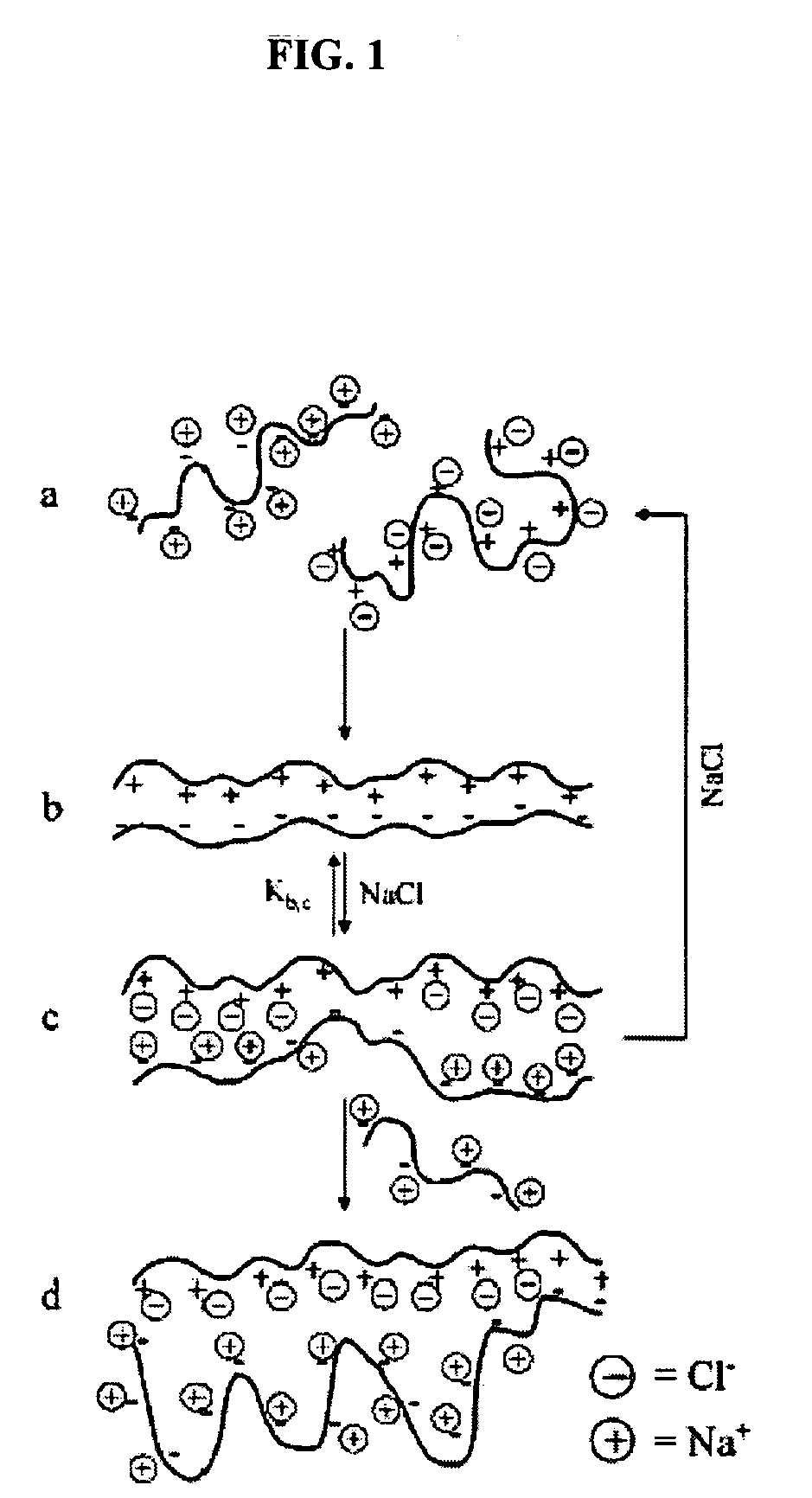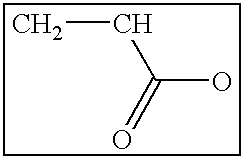Methods and compositions for treatment of ion imbalances
a technology of ion imbalance and composition, which is applied in the direction of drug compositions, cardiovascular disorders, synthetic polymeric active ingredients, etc., can solve the problems of imbalance in anions induced by sodium transport modification, high morbidity and mortality, and ineffective diuretics, etc., to achieve the effect of increasing the fecal excretion of sodium, reducing diastolic and/or systolic pressure, and reducing the amount of use in humans
- Summary
- Abstract
- Description
- Claims
- Application Information
AI Technical Summary
Benefits of technology
Problems solved by technology
Method used
Image
Examples
example 1
Measurement of Sodium Binding Capacity in Vitro
[0095] The resin material is treated with 1M HCl and washed repeatedly with water. A weighted aliquot is then titrated with 0.1M NaOH and the capacity recorded as the mole amount of base needed to reach the desired pH (usually 6). Alternatively, the resin is soaked in 1M NaCl solution buffered at the desired pH, washed with water, and finally treated with 0.5M KCl. The sodium released is then titrated by ion-exchange chromatography and the sodium binding capacity calculated accordingly. Polymer beads described in the examples hereafter, typically give a Na binding capacity in the range of about 6 to 10 mmol / gr.
example 2
Synthesis of Sodium Binding Polymeric Compositions
A. Synthesis of Polyvinylsulfonate Polymer Beads
[0096] Vinyl sulfonate monomer is first polymerized in water with sodium persulfate as a free radical initiator in a pressure-proof reactor at 110° C. Polyvinylsulfonate oligomers are isolated by precipitation in acetone. Oligomers are then treated with thionylchloride to form vinylsulfonate-co-vinylsulfonylchloride copolymers. Beads are obtained by dispersing a vinylsulfonate-co-vinylsulfonylchloride oligomer solution in toluene, then adding diamino-propane to form the desired beads. Final beads are washed extensively with water, 1M HCl, and water successively.
B. Synthesis of Polyvinylsulfamate Polymer Beads by Inverse Suspension Polymerization
[0097] 100 parts of vinylformamide / methylene-bis-acrylamide in a 90 / 10 weight ratio are solubilized in 100 parts of water with 1 part of sodium persulfate as an initiator; the mixture is then dispersed in 200 parts of toluene and one part o...
example 3
Measurement of Sodium-Binding Capacity in Physiological Conditions Representative of the Upper GI Tract
[0111] Particles of Examples2A-2O are conditioned under the proton form and added to a reconstituted GI fluid representative of the jejunum segment, including bile acids, fatty acids, and intestinal enzymes. Na and K cations are set at 80 mM and 15 mM, respectively. After incubation at 37° C. for 30 minutes the beads are isolated by filtration and washed with de-ionized water. Then a 0.5M LiCl solution is added to displace both Na and K cations. The cation binding capacity is then calculated and found in the range of 3 mmol / gr to 10 mmol / gr for sodium and 0.2 mmol / gr to 2 mmol / gr for potassium.
Measurement of Sodium-Binding Capacity in Physiological Conditions Representative of the Lower GI Tract
[0112] Particles of Examples 2A-2O are incubated in the simulated upper tract fluid and isolated and washed as indicated above and are then added to a simulated fluid representative of th...
PUM
| Property | Measurement | Unit |
|---|---|---|
| thickness | aaaaa | aaaaa |
| thickness | aaaaa | aaaaa |
| thickness | aaaaa | aaaaa |
Abstract
Description
Claims
Application Information
 Login to View More
Login to View More - R&D
- Intellectual Property
- Life Sciences
- Materials
- Tech Scout
- Unparalleled Data Quality
- Higher Quality Content
- 60% Fewer Hallucinations
Browse by: Latest US Patents, China's latest patents, Technical Efficacy Thesaurus, Application Domain, Technology Topic, Popular Technical Reports.
© 2025 PatSnap. All rights reserved.Legal|Privacy policy|Modern Slavery Act Transparency Statement|Sitemap|About US| Contact US: help@patsnap.com



